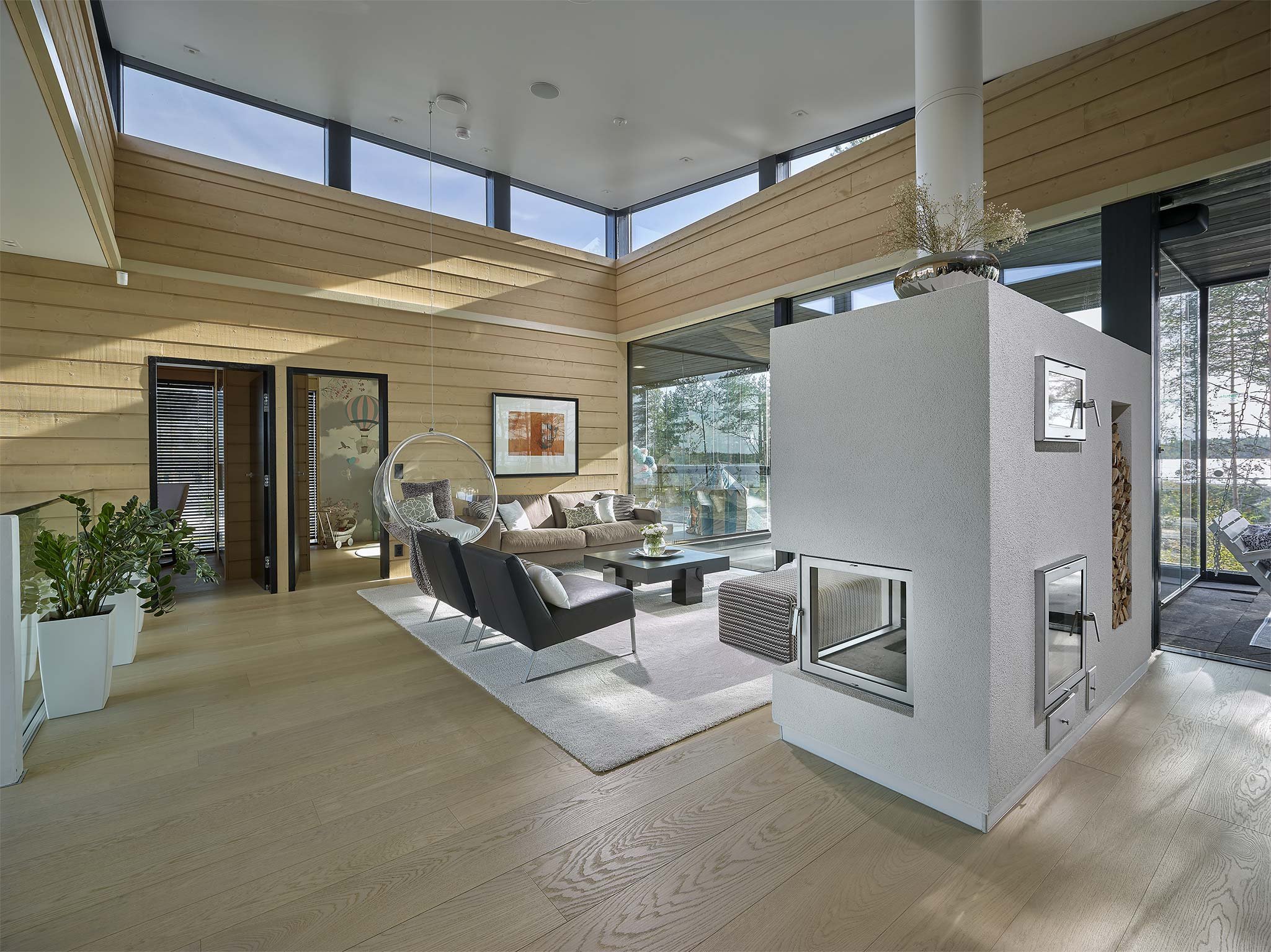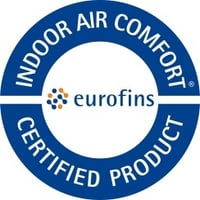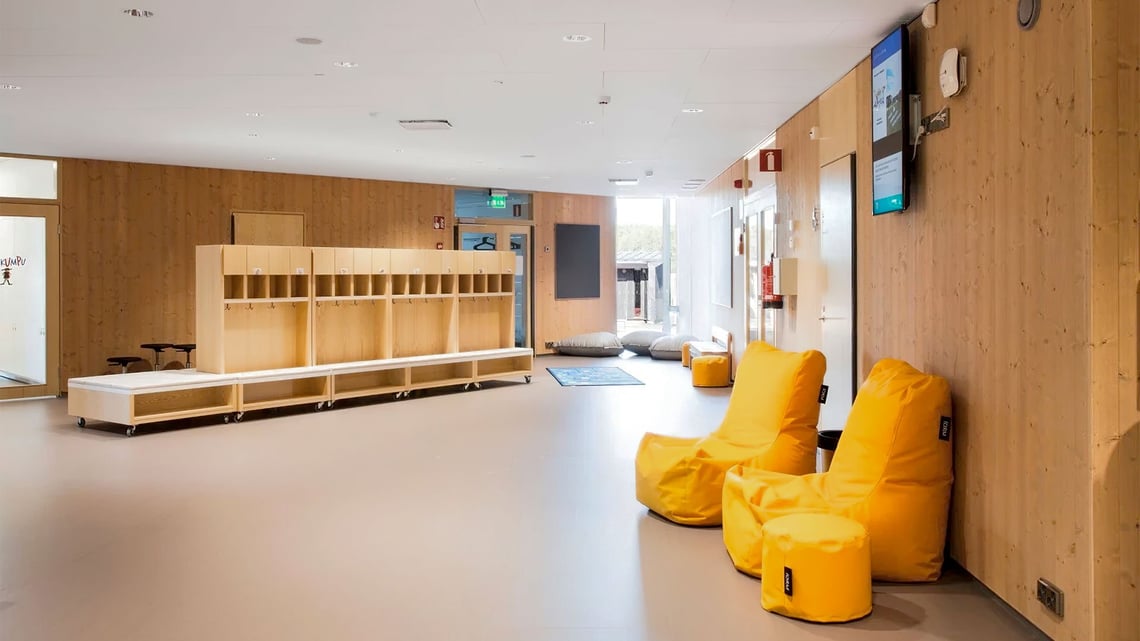A good level of indoor air quality in buildings is important for both people’s health and comfort. Therefore, low-emission building materials are preferred in the construction industry. Wooden surface materials are also used in spaces where surfaces have to be fire protected.
However, not all fire retardants have low emissions. The best fire protected wood products for indoor use have been tested and certified in accordance with the emissions criteria required in different countries.
BUILDING MATERIALS AFFECT INDOOR AIR QUALITY
Many aspects affect indoor air quality. The key factors include the ventilation solutions, building location, building method and materials, building use and weather conditions.
The impact of building materials on indoor air quality is to do with their emission levels. Building materials as well as both movable and fixed furniture can produce VOC emissions (volatile organic compounds). Such gases include aromatic hydrocarbons (toluene, benzene), aldehydes, halogenated compounds, esters and alcohols (ethanol, n-butanol, propanol).
Today, various wood products are used as interior surfaces because of their numerous good properties. Natural wood is an environmentally friendly material that can be used to liven up or tone down the decor of a room.
Untreated softwood is a low-emission building material. Treated wood products can only obtain certifications related to indoor air emissions based on tests by accredited testing laboratories. The emission levels from fire retardants can also be tested and certified.
As the aim is to always design and produce healthy and comfortable buildings and ensure low emissions in renovated buildings, it makes sense to choose only wood products treated with a low-emission fire retardant.

Honkatalot Riihi, Seinäjoki, Finland
NATIONAL AND INTERNATIONAL EMISSION STANDARDS FOR BUILDING MATERIALS
Many countries have their own standards regarding accepted emission levels from construction products. In Europe, products with Indoor Air Comfort ® certification meet the emission standards specified by the European Union. In Finland, there is also an emission classification system developed by the Building Information Foundation, dividing products into classes M1-M3. M1 is the best, indicating low emissions. In the United States, the emissions from construction products are regulated, for example, by the CDPH (California Department of Public Health).
In addition, many international certification programs focusing on the sustainability of buildings and construction products, such as LEED and BREEAM, require verified low emission levels from the products.

Emission requirements based on Indoor Air Comfort ® certification *)
- TVOC (CEN/TS 16516) is 1000 µg/m³ or lower
- RB value (based on Belgian LCI values) is 1 or lower
- RD value (based on German LCI values 2015) is 1 or lower
- Sum of VOC without German LCI and non-identified VOC is 100 µg/m³ or lower
- TSVOC is 100 µg/m³ or lower
- Any individual carcinogens (C1A, C1B) **) is 1 µg/m³ or lower
- 4 CMR substances as specified in the French regulations, each are 1µg/m³ or lower
- French VOC emission class is A or A+
- Formaldehyde is 60 µg/m³ or lower
- Acetaldehyde is 200 µg/m³ or lower
*) After 28 days
**) As far as detectable with CEN/TS 16516 / ISO 16000-3/-6 test methods
TESTED FIRE RETARDANTS WITH EMISSION CLASSIFICATIONS
NT DECO has been properly tested with emission classifications. This low-emission fire retardant is excellently suited for indoor use. Wood products treated according to the manufacturer’s instructions meet the requirements of fire class B-s1,d0. The products have been tested by Eurofins.
Nordtreat fire retardants have the following emission classifications:
- Indoor Air Comfort®
- CDPH
- M1
- A+
- AgBB
- BREEAM
- LEED v4
Read more about the test results and certifications of the Nordtreat products.

